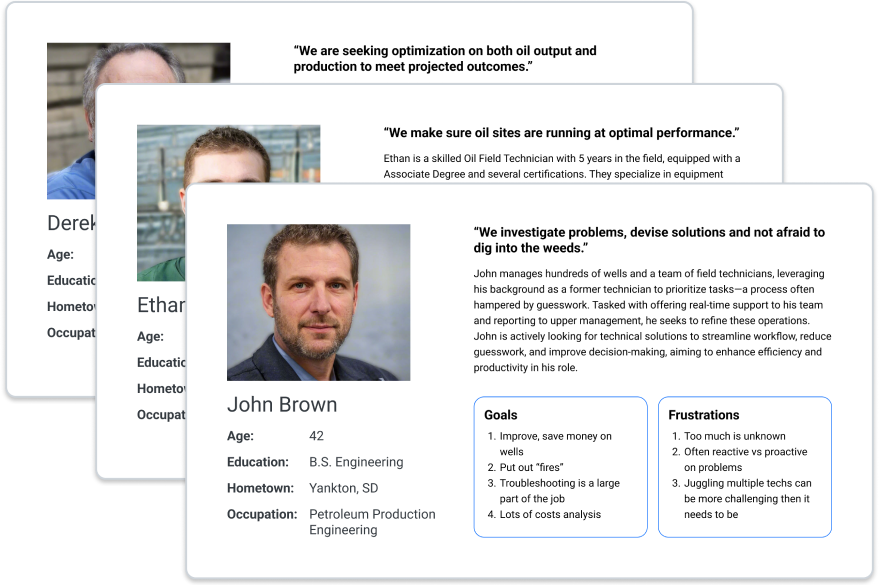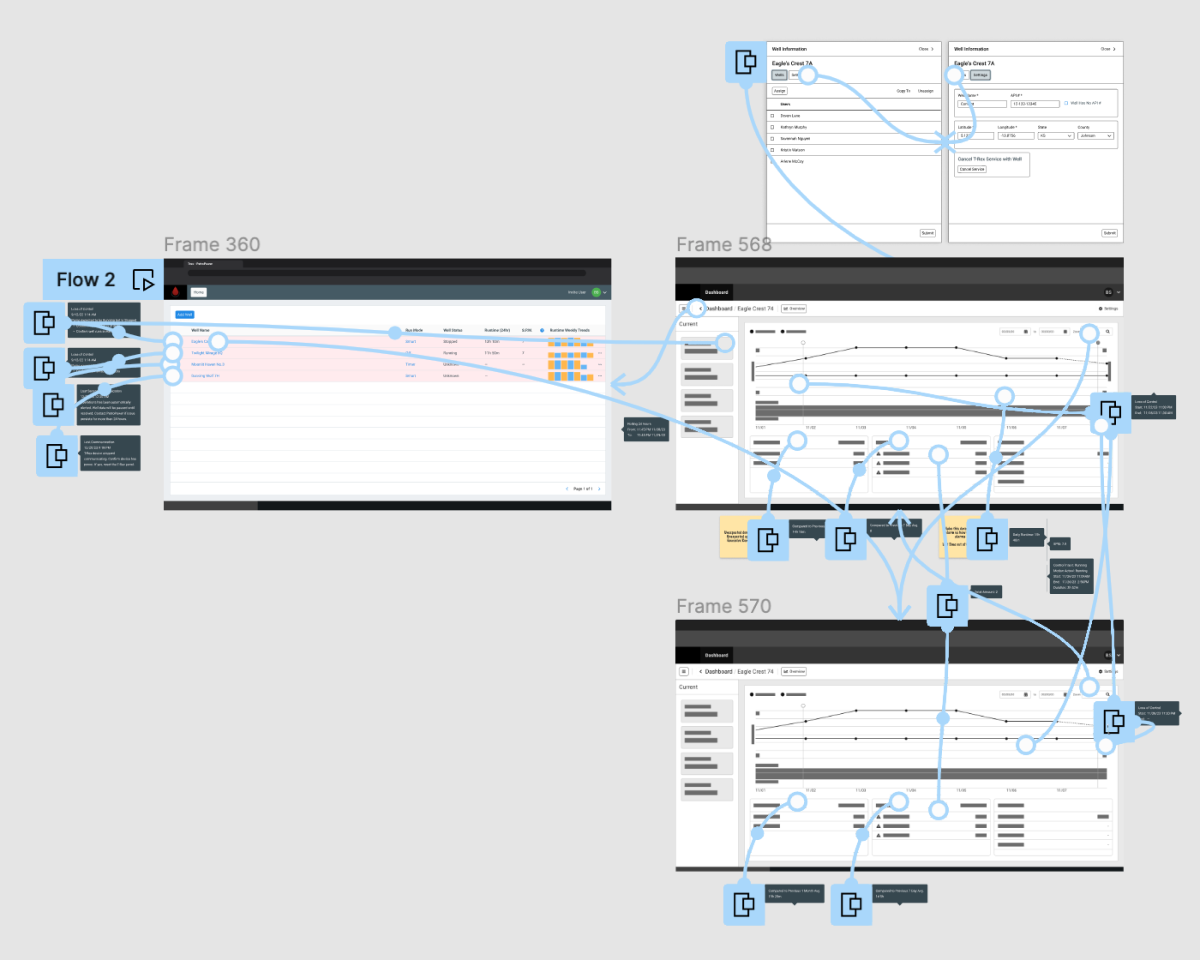
Personas
Before diving into the design process, I sought insights about our customers. Conversations with the CEO and engineers provided clarity on three distinct personas that would guide my design decisions. Although these personas varied in their job roles, they shared some similarities: predominantly blue-collar workers, spanning various age groups, and generally less tech-savvy, sometimes even resistant to new technology.




